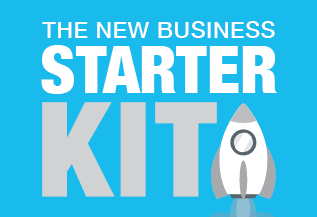Cash Flow – The Lifeblood of Your Business
Business owners face a number of challenges that can keep them awake at night. To prosper you obviously need a good product or service and you should strive to provide awesome customer service. You might need to raise finance, you’ll certainly need some marketing skills and you’ll probably have come to terms with bookkeeping, Business Activity Statements and have an understanding of the tax implications of your business structure.
As your business grows, so does the magnitude of some of the challenges.
.jpg)
Poor cash flow is a major factor in why businesses fail and the Ombudsman’s Office found Australian businesses and some Government sectors are notorious late payers. On average customers pay 26.4 days later than the due date. This triggers a domino effect down the supplier chain and the building trades are notorious late payers. With slow cash flow, it’s common practice for business owners to use their credit card or personal savings to prop up the business but this is one of the early warning signs that a business might be in trouble.
With Christmas and the holiday season fast approaching, a lot of November and December invoices don’t get paid until February. That can be catastrophic for seasonal businesses like function centres and party hire businesses. Cash flow is the life blood of your business so let’s look at some ways to help improve your cash flow.
1. Payment Terms

Before you commence work for any new customer, client or patient, always state your rates, payment terms and policies regarding late payments including any additional fees and charges. Your invoices and new customer onboarding documentation must highlight your trading terms.
What is standard in your industry – cash on delivery (COD), 7 days, 14 days or 30 days? Make it crystal clear and there’s nothing stopping you from asking for payment sooner including payment on delivery. On the flip side, negotiate with your suppliers for extended payment terms and if possible, beyond 30 days. According to ASIC’s annual report on corporate insolvency, difficulties in meeting creditors’ deadlines was identified as a top indicator of a business becoming cash insolvent.
Of course, don’t delay invoicing the work. Invoice your customers the moment the job is completed or even ask for progress payments. This is common practice for large jobs and particularly in the construction industry. Sometimes ask for prepayment of 50% of the job. In business, procrastination can lead to poverty.
From an administration point of view, accounting software can automate the debtor follow up process and where possible, put direct debit payments in place for your customers to minimise the delay between invoicing and receipt of the funds. Don’t forget to follow up overdue accounts with customer statements but a follow up reminder phone call is more likely to get a response. As they say, the squeaky wheel gets oiled.
Steady, reliable cash flow is crucial for the survival of any small business and service-based businesses like solicitors, IT companies, business coaches and accountants can offer their clients ‘fixed price agreements’ that might include a package of services to be delivered over the year but the client pays in monthly instalments by direct debit. It guarantees a monthly income stream and helps with forward planning.
2. Planning & Cash Flow Forecast

When running a business, failing to plan is planning to fail. As a business owner, it is vitally important that you identify any future cash shortages and banks can take weeks (if not months) to approve loans and overdrafts. According to ASIC’s annual report on corporate insolvency, poor strategic management and planning contributed to 46% of all business failures during the 2017/18 financial year.
You should produce a cashflow budget for the next quarter and year to identify any likely cash shortfalls. Your cash flow budget will highlight the inflow and outflow of cash in your business and project bank balances at the end of the month. Your projections should be supported by realistic assumptions and remember, if you run out of funds your landlord, staff and suppliers aren’t going to fund the operation of your business.
As a business owner you might be juggling a number of important roles, but you can’t afford to take your eye off your cash flow. If you are too busy in the sales, marketing or production roles get a staff member to monitor daily and weekly inflows and outflows to make sure there is sufficient cash on hand to pay your rent, wages and regular outgoings.
3. Keep it Simple

The business landscape has changed courtesy of the internet and smart phones. Tap and go is common practice and customers expect to pay and go in seconds. They don’t want to wait for you to produce and print invoices and if you’re currently preparing manual invoices, it’s time to convert to an accounting system with automated billing. You’ll never forget to invoice a client, you’ll eliminate errors and you save time by emailing your customer the invoice. The software program will automatically update your debtors and send customer statements.
Point of sale systems are now very sophisticated and are designed for customer convenience as well as your stock control. They can activate the re-order of items of stock and help with monitoring pilferage. Give customers the option to pay you with secure options including EFTPOS, bank transfers and credit cards.
4. Marketing
Apart from servicing and retaining your existing customers you also need to attract new customers. There’s no room for complacency as customers are motivated by a range of variables including price or the latest product release. You can’t stock every model from every brand and you can’t rely on your biggest customer to buy from you every time. If you put all your ‘eggs’ in one basket and they leave because they found a cheaper supplier or they have a change of management you could be in trouble.
They say, ‘small fish are sweet’ and if you lose a small customer it won’t cripple the business. You must consistently market your business
and increasingly the focus needs to be your online activities. Your website is your silent sales person working 24/7/365 days to attract
more of your ideal type of customer. Social media is an important part of your marketing artillery and video content is growing in
importantance.

For small business owners, cash is king and you need to monitor your accounts receivable on a regular basis. Generate an aged debtors report to identify your problem customers and communicate with them. Provided it works for you, offer them a repayment plan or consider placing the outstanding amount in the hands of a debt collection agency. Recovery action is a last resort and while you risk losing the customer, delinquent customers can send you broke. As a small business owner, you’re not in the banking business.
If you need help preparing a cash flow budget, talk to us today.
This article forms part of our December 2018 Business Accelerator Magazine. Click HERE to
download a PDF of our latest edition or select other articles below:-
- Cents Per Kilometre Rate Change
- How to Reduce Your Business Risk
- Financing Your Start-Up Business
- Tax Office Launches Mobile Strike Teams
- Tax & Your Christmas Party?
- Common Bookkeeping Mistakes to Avoid




